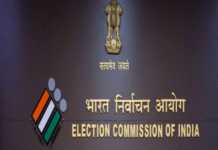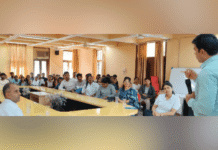Car Nicobar’s fragile livelihood web, woven from tides, tradition, and tenacious seafaring, tightened a new safety knot on 29 May 2025 when the Central Island Agricultural Research Institute rolled out an awareness session on Distress Alert Transmitters. Twenty-five Nicobarese fishers filed into the tribal council office, some clutching worn wooden paddles, others curious about the palm-sized electronics promised to shave minutes off life-or-death rescues. By sundown the islanders, guided by CIARI’s scientists Vinay and Sonia, had learned to trigger a beacon that shoots latitude and longitude into the sky and straight onto the Coast Guard’s console.
The technology they handled feels nothing like the dugout canoes their ancestors once carved, yet DATs have swiftly become non-negotiable kit for deep-sea crews across the Indian coastline. When an engine stalls off the Ten-Degree Channel or a cyclone’s first whitecap sneaks up, the bright-orange transmitter turns a desperate shout into a digital SOS heard hundreds of nautical miles away. CIARI brought that reality home with a live demo: a mock “man overboard” activated the beacon; within seconds, a simulated command station display pinged, proving just how far a split-second signal travels. Heads nodded, eyes widened.
Chief Captain Lionald Nicomed, towering in traditional Nicobarese headgear, cut through the technical jargon with an unvarnished plea. Safety, he told his peers, should ride the canoe before faith and fortune. The message landed. Many have lost cousins or neighbours to freak swells or night-time squalls. DATs cannot calm an angry sea, but they can buy the half-hour that separates a miracle rescue from a newspaper obituary.
Behind the demonstration sits the Coastal Fisheries Information Hub, a Department of Science and Technology-funded project stitched together by CIARI director Eaknath B Chakurkar. The hub analyses weather feeds, vessel positions and catch landings, then pushes tailor-made advisories in local dialects. DAT training is a natural extension: if fishers transmit emergencies, the hub’s data stream closes the loop for responders.
Car Nicobar’s topography magnifies the stakes. Coral reefs, sparse telecom towers and long runs between inhabited shores make radio contact fickle. DATs piggyback on satellite constellations and slice through dead zones, removing the guesswork for helicopters dispatched from Port Blair. In the past decade at least a dozen Nicobar boats have vanished without coordinates; maritime investigators often list “communication failure” as a cause. The institute hopes its programme can reverse that grim ledger.
The cost hurdle remains. A single transmitter retails for several thousand rupees, a steep outlay for crews that still barter tuna for rice. CIARI is lobbying central agencies to subsidise bulk purchases and exploring community-owned devices that rotate among boats. Meanwhile, Car Nicobar’s tribal council is studying bylaws that could make DAT carriage mandatory on vessels venturing beyond the lagoon.
Training will not end with the one-day camp. Over the monsoon lull, CIARI plans refresher drills, installation clinics and a WhatsApp helpline manned around the clock. Alumni will mentor neighbouring villages, the institute calls it the “buddy beacon” model, so that every launch across the archipelago eventually carries at least one person who can troubleshoot antenna angles and battery cycles.
Fresh knowledge, however, must survive salt water, humidity and hard labour. Fisheries officers are pushing for waterproof user guides printed on plasticised cards that tie to wheelhouses. A proposal also floats to integrate DAT activation prompts into school curricula, seeding familiarity long before teenagers graduate to crewing.
For a community that measures wealth in nets and knot skills, adopting silicon gadgets may feel like surrendering lore. Yet the fishers who attended Thursday’s workshop appeared less conflicted than curious. Tradition, one elder whispered, means protecting the living memory of those who went before, and that memory now rests on a blinking LED. If project milestones stay on course, CIARI expects Car Nicobar’s entire active fleet to carry transmitters by early 2026, making the island a showcase for blue-economy safety.
On the pier outside the tribal council, dusk painted the horizon crimson. A young deckhand thumbed a loaned DAT one last time, watching its indicator flash. “So it talks to the sky,” he marvelled, half joke, half wonder. If that conversation between boat and satellite keeps a single fisher from drifting unseen under the same sky, Thursday’s demonstration will count as a clear rescue before a distress call is ever placed.





